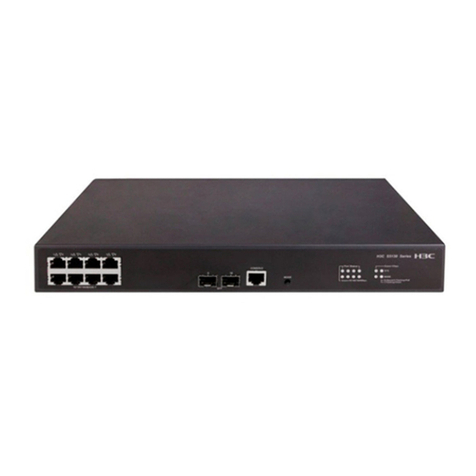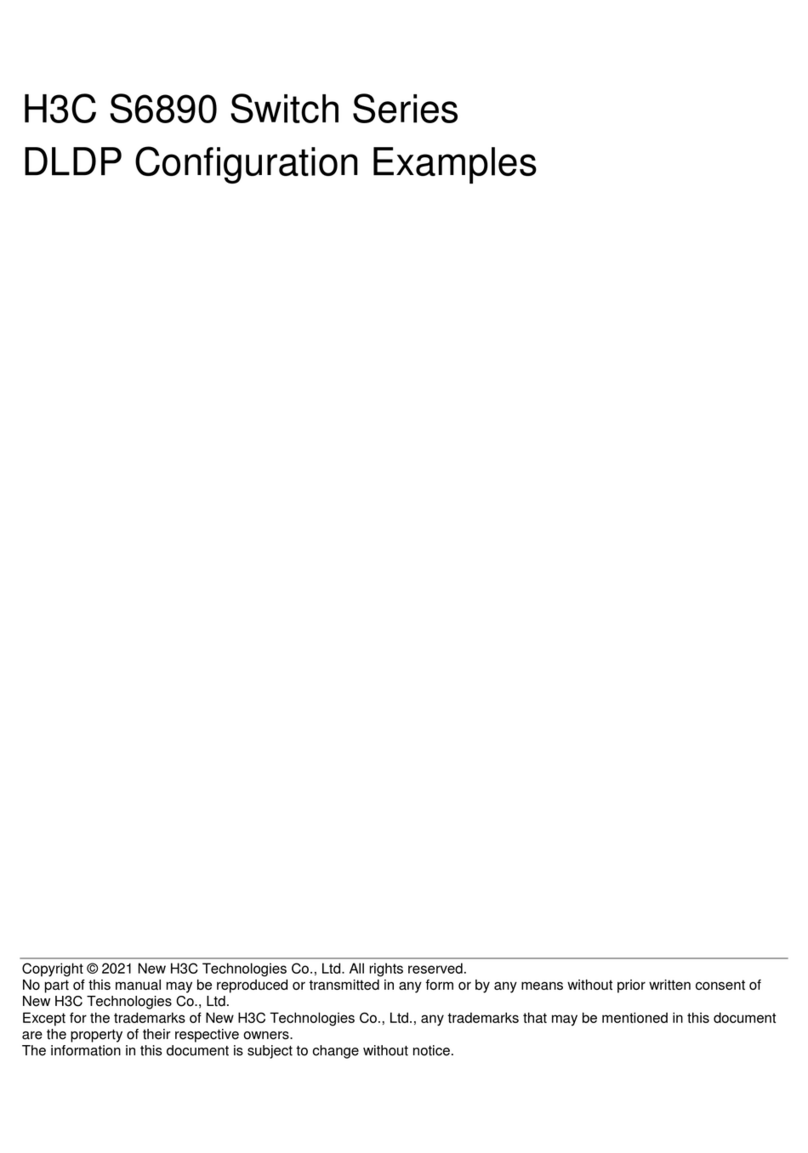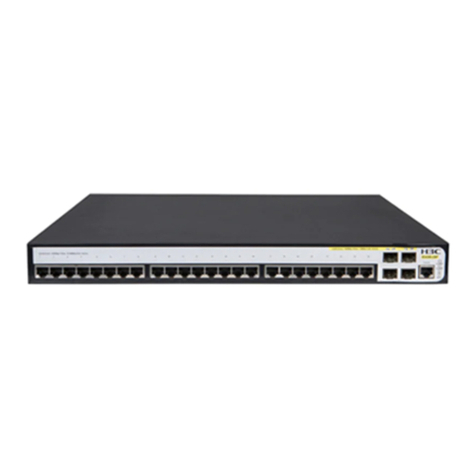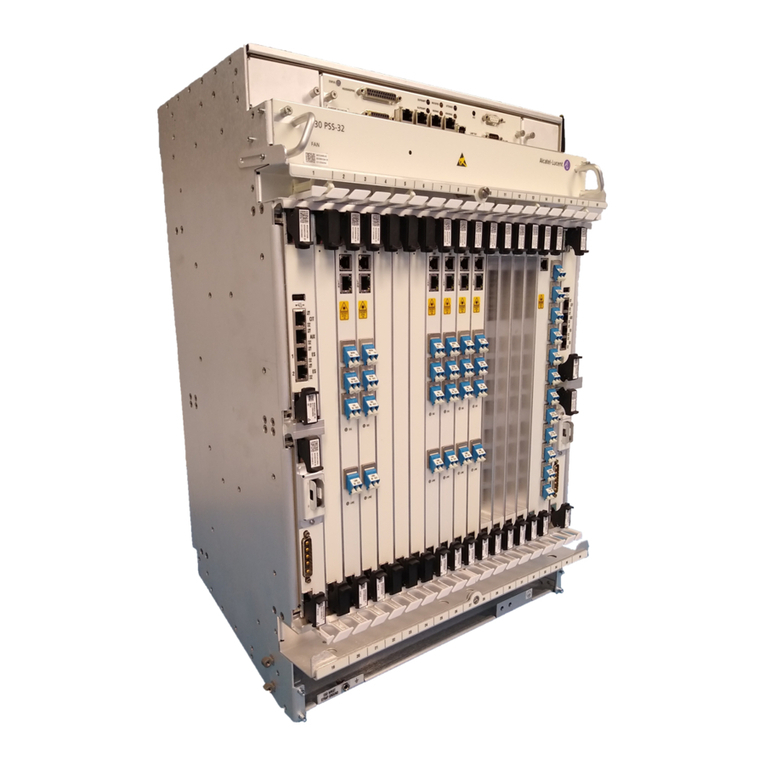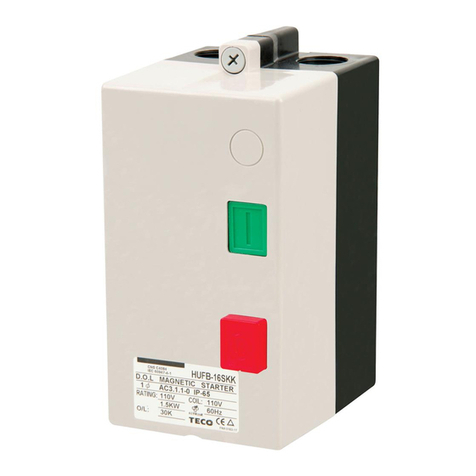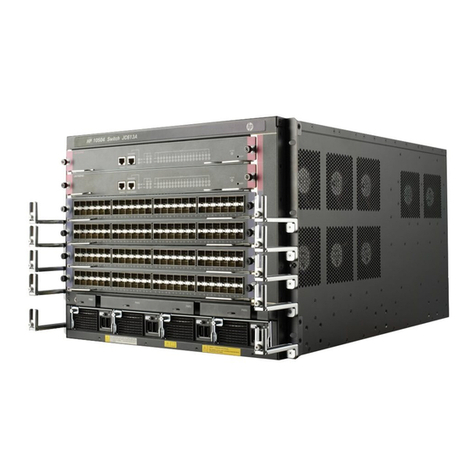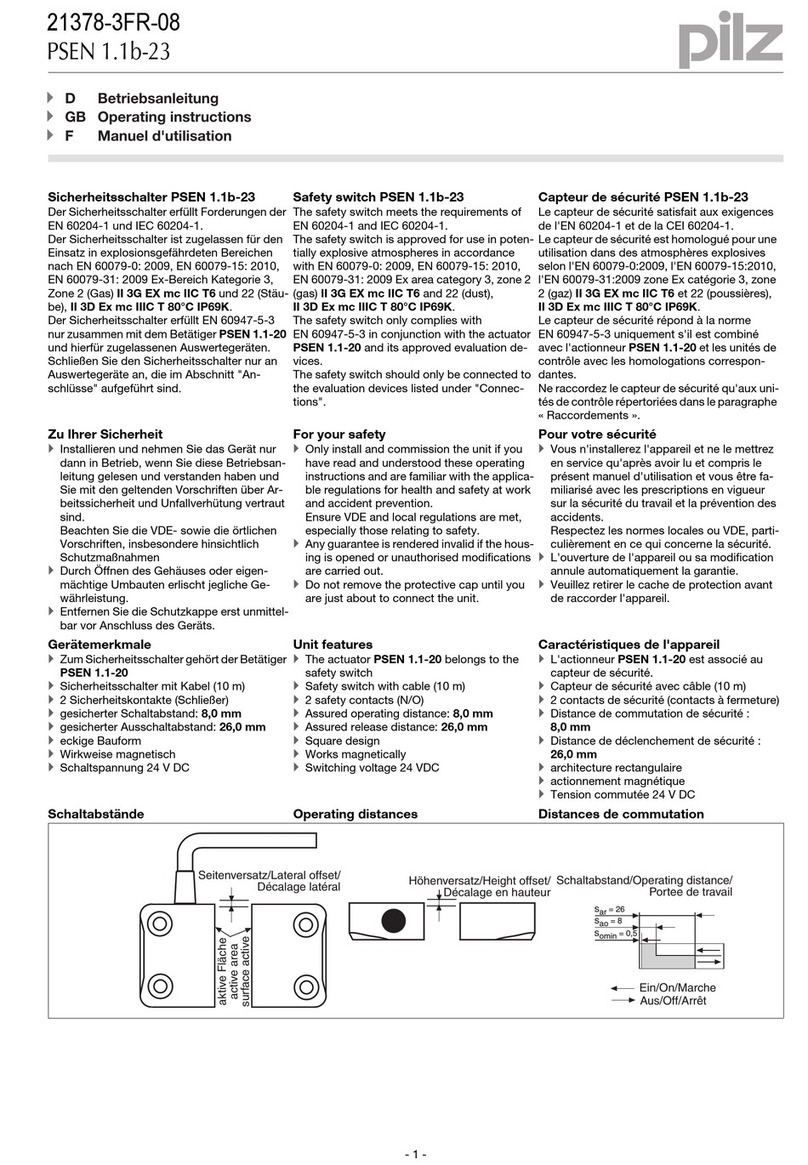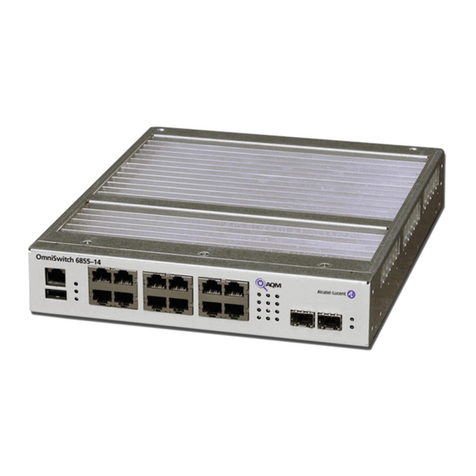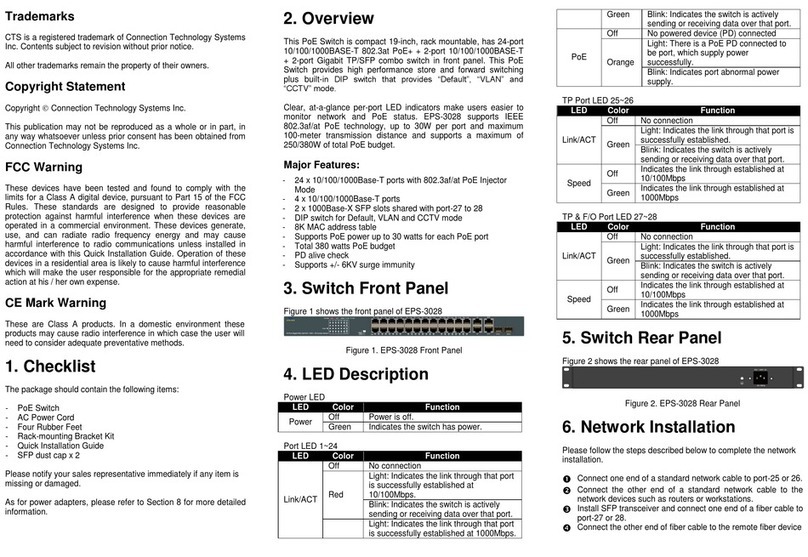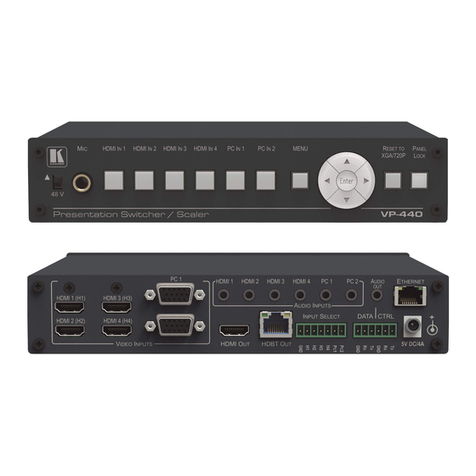H3C S5500-SI Series User manual

Operation Manual – Stack Management
H3C S5500-SI Series Ethernet Switches Table of Contents
i
Table of Contents
Chapter 1 Stack Management Configuration .............................................................................1-1
1.1 Stack Management Overview............................................................................................1-1
1.1.1 Introduction to Stack ...............................................................................................1-1
1.1.2 Establishing a Stack................................................................................................1-2
1.2 Stack Management Configuration Task List......................................................................1-2
1.3 Configuring the Master Device of a Stack .........................................................................1-2
1.3.1 Configuring a Private IP Address Pool for a Stack .................................................1-2
1.3.2 Configuring Stack Ports ..........................................................................................1-3
1.3.3 Creating a Stack......................................................................................................1-3
1.4 Configuring Stack Ports of a Slave Device........................................................................1-4
1.5 Switching from the Master Device to a Slave Device........................................................1-4
1.6 Displaying and Maintaining Stack Management................................................................1-5
1.7 Stack Management Configuration Example......................................................................1-5
1.7.1 Stack Management Configuration Example............................................................1-5

Operation Manual – Stack Management
H3C S5500-SI Series Ethernet Switches Chapter 1 Stack Management Configuration
1-1
Chapter 1 Stack Management Configuration
When configuring stack management, go to these sections for information you are
interested in:
zStack Management Overview
zStack Management Configuration Task List
zConfiguring the Master Device of a Stack
zConfiguring Stack Ports of a Slave Device
zSwitching from the Master Device to a Slave Device
zDisplaying and Maintaining Stack Management
zStack Management Configuration Example
1.1 Stack Management Overview
A stack is a set of network devices. Administrators can group multiple network devices
into a stack and manage them as a whole. Therefore, stack management can help
reduce customer investments and simplify network management.
1.1.1 Introduction to Stack
Astack is a management domain that comprises several network devices connected to
one another through stack ports. In a stack, there is a master device and several slave
devices.
An administrator can manage all the devices in a stack through the master device.
Figure 1-1 shows a network diagram for stack management.
Figure 1-1 Network diagram for stack management

Operation Manual – Stack Management
H3C S5500-SI Series Ethernet Switches Chapter 1 Stack Management Configuration
1-2
zMaster device: In a stack, the master device acts as the configuration interface in
stack management. Management andmonitoring of all the devices in the stack are
performed through the master device.
zSlave devices: Managed devices in a stack.
zStack port: Ports that connect the master device and slave devices, and ports
connect between the slave devices in a stack.
1.1.2 Establishing a Stack
An administrator can establish a stack as follows:
zConfigure a private IP address pool for a stack and create the stack on the network
device which is desired to be the master device.
zConfigure ports that connect the master device and slave devices, and ports that
connect between the slave devices as stack ports.
zThe master device automatically adds the slave devices into the stack, and
assigns a number for each stack member.
zThe administrator can log in to any slave device from the master device of the
stack, and perform configurations for the slave device.
1.2 Stack Management Configuration Task List
Complete the following tasks to configure stack management:
Task Remarks
Configuring a Private IP Address
Pool for a Stack Required
Configuring Stack Ports Required
Configuring the Master
Device of a Stack
Creating a Stack Required
Configuring Stack Ports of a Slave Device Required
Switching from the Master Device to a Slave Device Optional
1.3 Configuring the Master Device of a Stack
1.3.1 Configuring a Private IP Address Pool for a Stack
To do… Use the command… Remarks
Enter system view system-view —
Configure a private IP
address pool for the stack
stack ip-pool
ip-address { mask |
mask-length }
Required
By default, no IP address pool
is configured for a stack.

Operation Manual – Stack Management
H3C S5500-SI Series Ethernet Switches Chapter 1 Stack Management Configuration
1-3
Note:
zIf a device is already configured as the master device of a stack or is already a slave
device of a stack, you cannot configure a private IP address pool on the device.
zWhen you configure a private IP address pool for a stack, the number of IP
addresses in the address pool needs to be equal to or greater than the number of
devices to be added to the stack. Otherwise, some devices may not be able to join
the stack automatically for lack of private IP addresses.
1.3.2 Configuring Stack Ports
On the master device, configure ports that connect the master device and the slave
devices as stack ports.
Follow the steps below to configure stack ports:
To do… Use the command… Remarks
Enter system view system-view —
Configure the specified
ports as stack ports
stack stack-port
stack-port-num port
interface-list
Required
By default, a port is not a
stack port.
1.3.3 Creating a Stack
After you execute the stack role master command on a stack-supporting device, the
device becomes the master device of a stack and automatically adds the devices
connected with its stack ports to the stack.
Follow the steps below to create a stack:
To do… Use the command… Remarks
Enter system view system-view —
Create a stack stack role master Required
Note:
After you configure a device as the master device of a stack, the prompt changes to
<stack_0.Sysname>, where Sysname is the system name of the device.

Operation Manual – Stack Management
H3C S5500-SI Series Ethernet Switches Chapter 1 Stack Management Configuration
1-4
1.4 Configuring Stack Ports of a Slave Device
You need to configure stack ports to add a slave device to the stack.
The ports of a slave device that connect the stack devices need to be configured as
stack ports.
Follow the steps below to configure stack ports:
To do… Use the command… Remarks
Enter system view system-view —
Configure the specified
ports as stack ports
stack stack-port
stack-port-num port
interface-list
Required
By default, a port is not a
stack port.
Note:
After a device joins a stack and becomes a slave device of the stack, the prompt
changes to <stack_n.Sysname>, where n is the stack number assigned by the master
device, and Sysname is the system name of the device.
1.5 Switching from the Master Device to a Slave Device
In a stack, you can switch from the master device to the operation interface of a slave
device and perform configurations for the slave device.
Follow the step below to switch from the master device to a slave device:
To do… Use the command… Remarks
Switch from the master
device to the specified
slave device
stack switch-to
member-id Required
Available in user view
Note:
zThe stack switch-to command is used to switch from the master device to a slave
device with the user level unchanged. To switch back, use the quit command.
zBefore the switch, execute the telnet server enable command to enable Telnet.
Otherwise, the switch fails.

Operation Manual – Stack Management
H3C S5500-SI Series Ethernet Switches Chapter 1 Stack Management Configuration
1-5
1.6 Displaying and Maintaining Stack Management
To do… Use the command… Remarks
Display the stack information
of stack members display stack
[ members ]Available in any view
1.7 Stack Management Configuration Example
1.7.1 Stack Management Configuration Example
I. Network requirements
zSwitch A, Switch B, Switch C, and Switch D are connected with one another.
zCreate a stack, where Switch A is the master device, Switch B, Switch C, and
Switch D are slave devices. An administrator can log in to Switch B, Switch C and
Switch D through Switch A to perform remote configurations.
II. Network diagram
GE1/0/1 GE1/0/3
SwitchB: Slave device GE1/0/1GE1/0/1
SwitchC: Slave device SwitchD: Slave device
Stack
GE1/0/1 GE1/0/2
SwitchA: Master device
Figure 1-2 Network diagram for stack management
III. Configuration procedure
1) Configure the master device
# Configure a private IP address pool for the stack on Switch A.
<SwitchA> system-view
[SwitchA] stack ip-pool 192.168.1.1 24
# Configure port GigabitEthernet 1/0/1 as a stack port on Switch A.
[SwitchA] stack stack-port 1 port GigabitEthernet 1/0/1
# Create a stack.
[SwitchA] stack role master
2) Configure the slave devices

Operation Manual – Stack Management
H3C S5500-SI Series Ethernet Switches Chapter 1 Stack Management Configuration
1-6
# On Switch B, configure local ports GigabitEthernet 1/0/2, GigabitEthernet 1/0/1, and
GigabitEthernet 1/0/3 as stack ports.
<SwitchB> system-view
[SwitchB] stack stack-port 3 port GigabitEthernet 1/0/1 GigabitEthernet 1/0/2
GigabitEthernet 1/0/3
# On Switch C, configure local port GigabitEthernet 1/0/1 as a stack port.
<SwitchC> system-view
[SwitchC] stack stack-port 1 port GigabitEthernet 1/0/1
# On Switch D, configure local port GigabitEthernet 1/0/1 as a stack port.
<SwitchD> system-view
[SwitchD] stack stack-port 1 port GigabitEthernet 1/0/1
3) Verify the configuration
# Display stack information of the stack members on SwitchA.
<stack_0.SwitchA> display stack members
Number : 0
Role : Master
Sysname : stack_0.SwitchA
Device type: H3C S5500-28C-SI
MAC address: 000f-e200-1000
Number : 1
Role : Slave
Sysname : stack_1.SwitchB
Device type: H3C S5500-28C-SI
MAC address: 000f-e200-1001
Number : 2
Role : Slave
Sysname : stack_2.SwitchC
Device type: H3C S5500-28C-SI
MAC address: 000f-e200-1002
Number : 3
Role : Slave
Sysname : stack_3.SwitchD
Device type: H3C S5500-28C-SI
MAC address: 000f-e200-1003
Other manuals for S5500-SI Series
22
Table of contents
Other H3C Switch manuals

H3C
H3C S6860 Series User manual
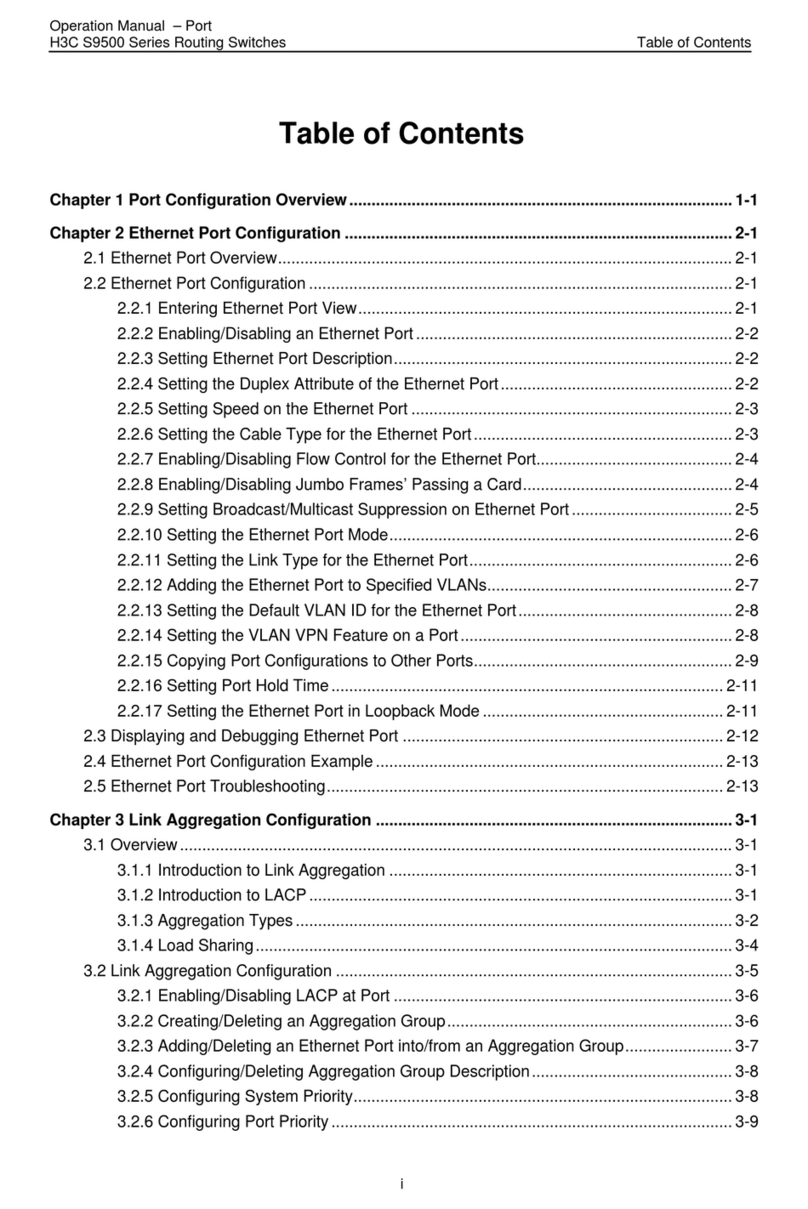
H3C
H3C S9500 Series User manual

H3C
H3C S6800 Series Installation manual
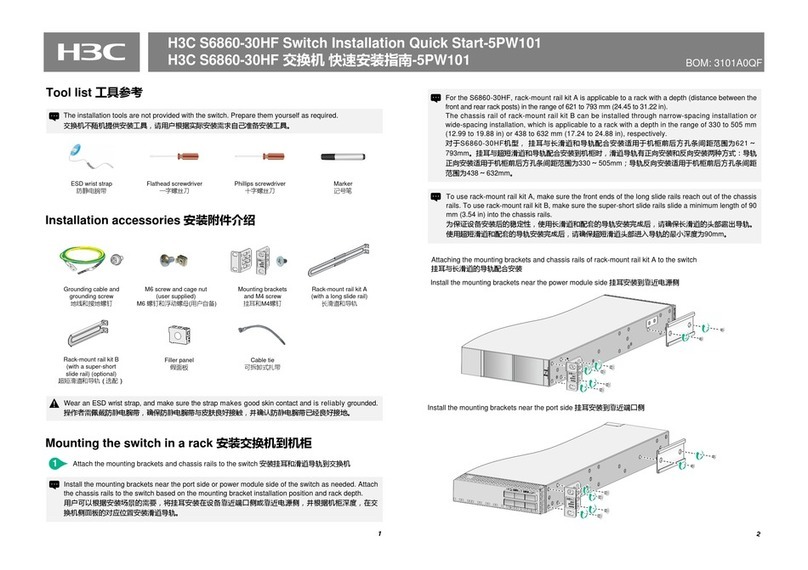
H3C
H3C S6860-30HF Operating and maintenance manual
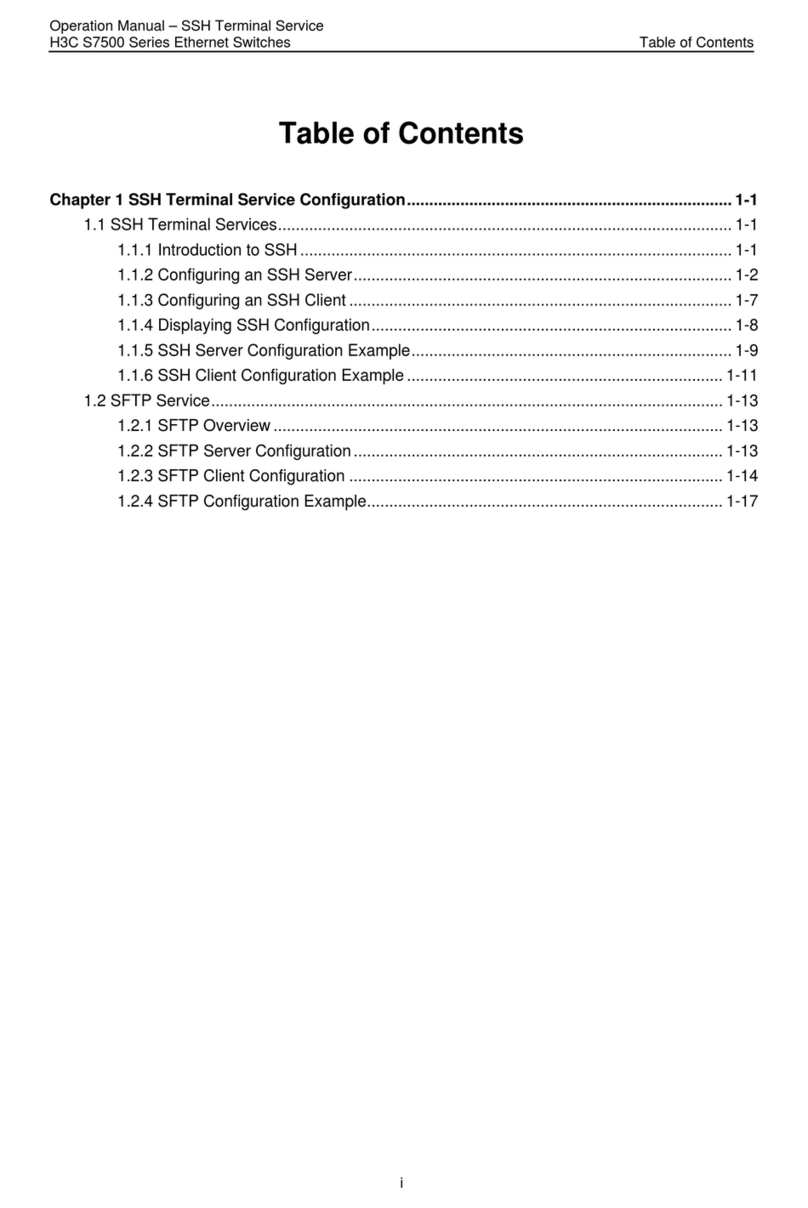
H3C
H3C S7500 Series User manual
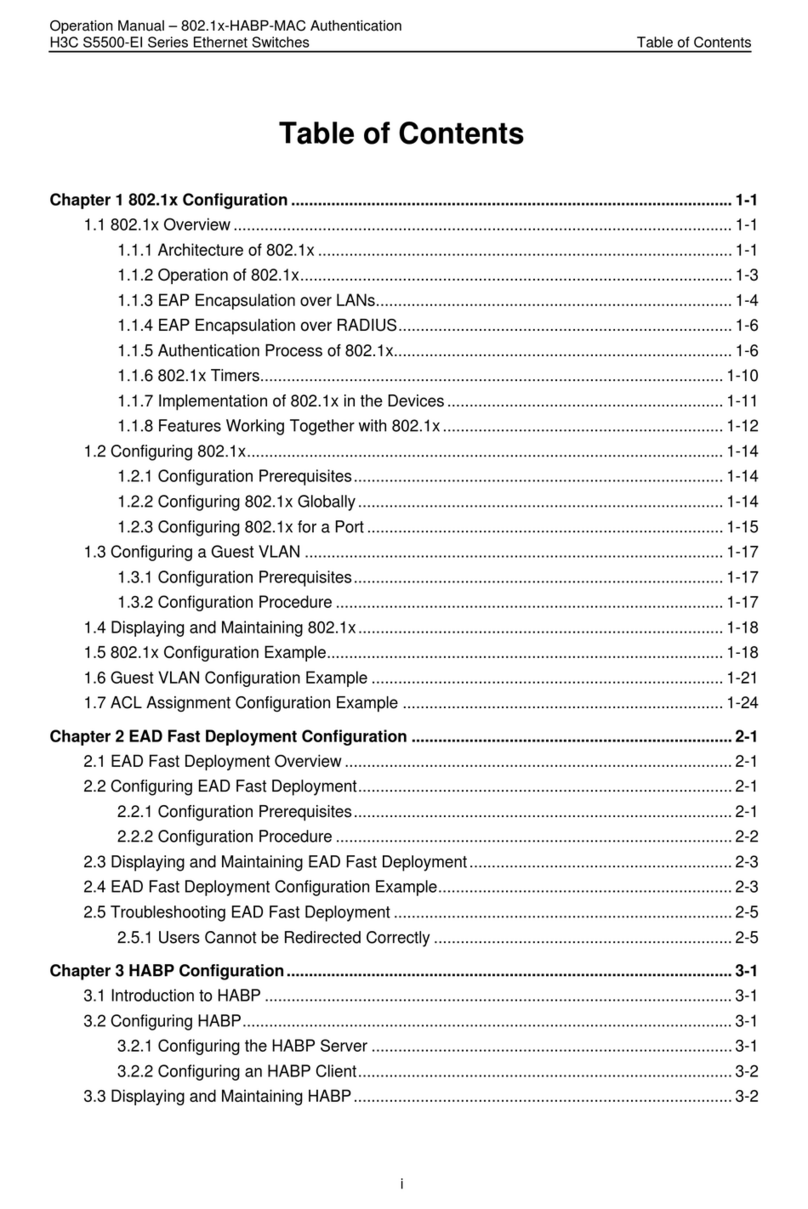
H3C
H3C S5500-EI series User manual

H3C
H3C S9820-64H User manual
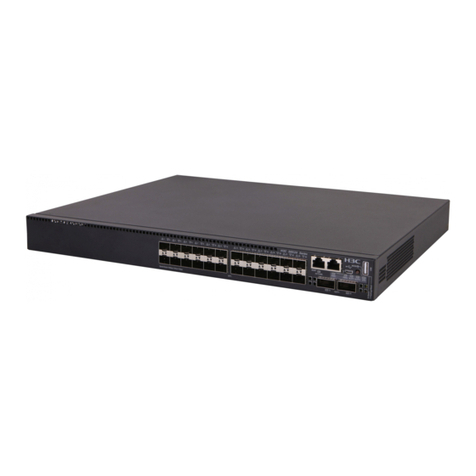
H3C
H3C S5560X-HI Series User manual
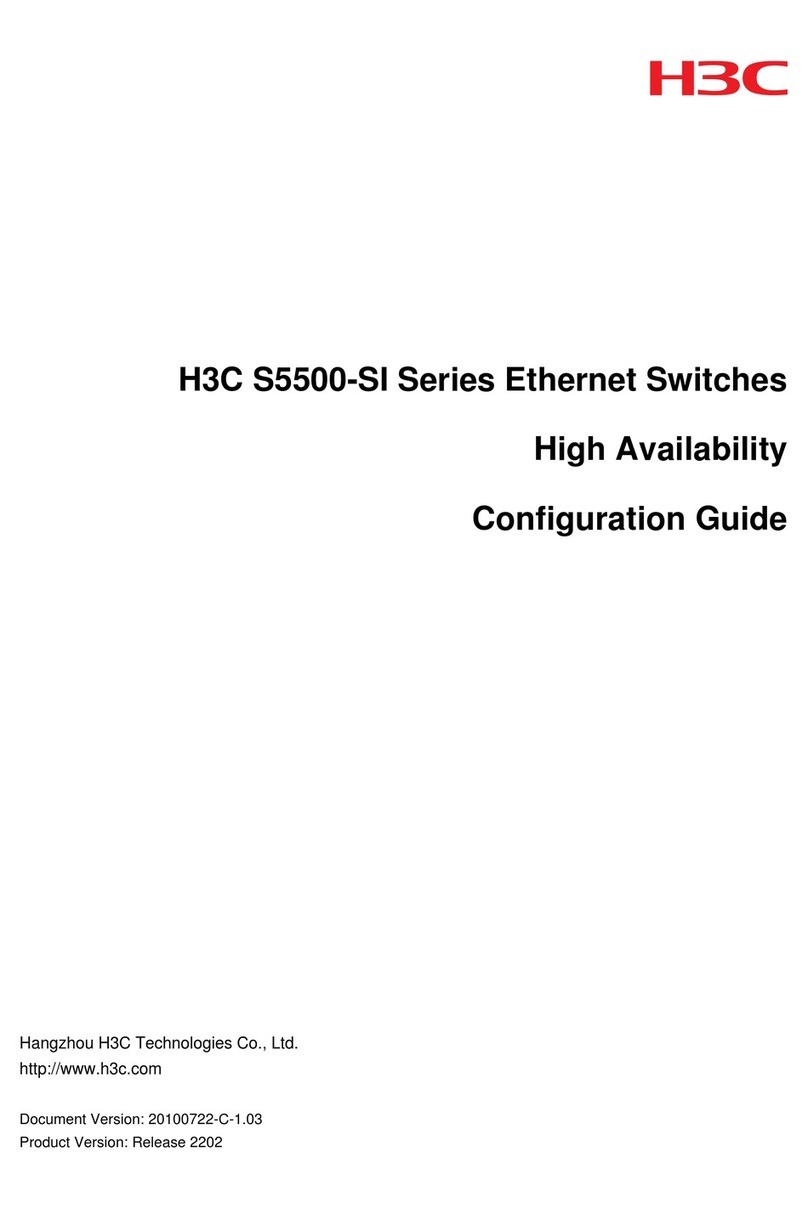
H3C
H3C S5500-SI Series User manual
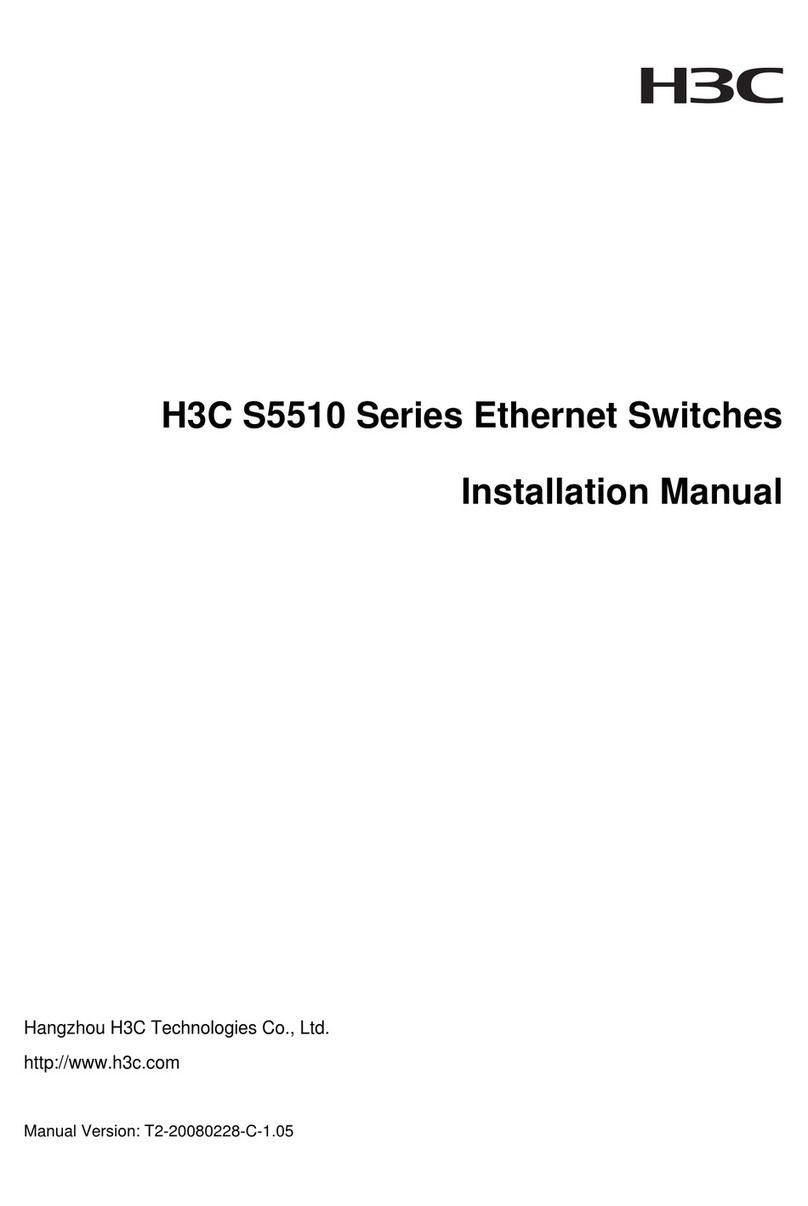
H3C
H3C S5510 Series User manual

H3C
H3C WX3000 Series Instruction Manual

H3C
H3C S9500 Series User manual

H3C
H3C Aolynk ET204 User manual
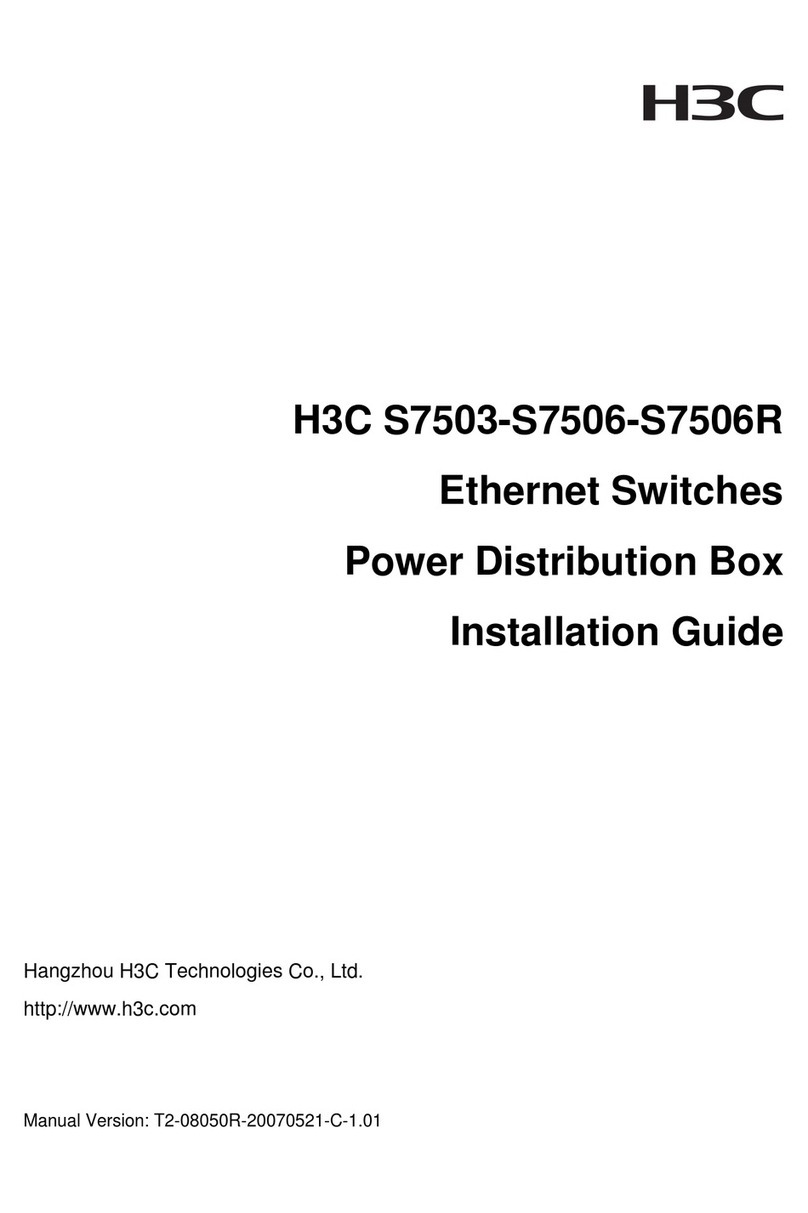
H3C
H3C S7506 User manual
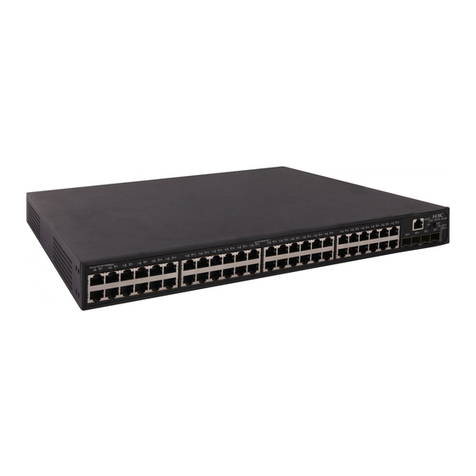
H3C
H3C S5130S-EI series User manual
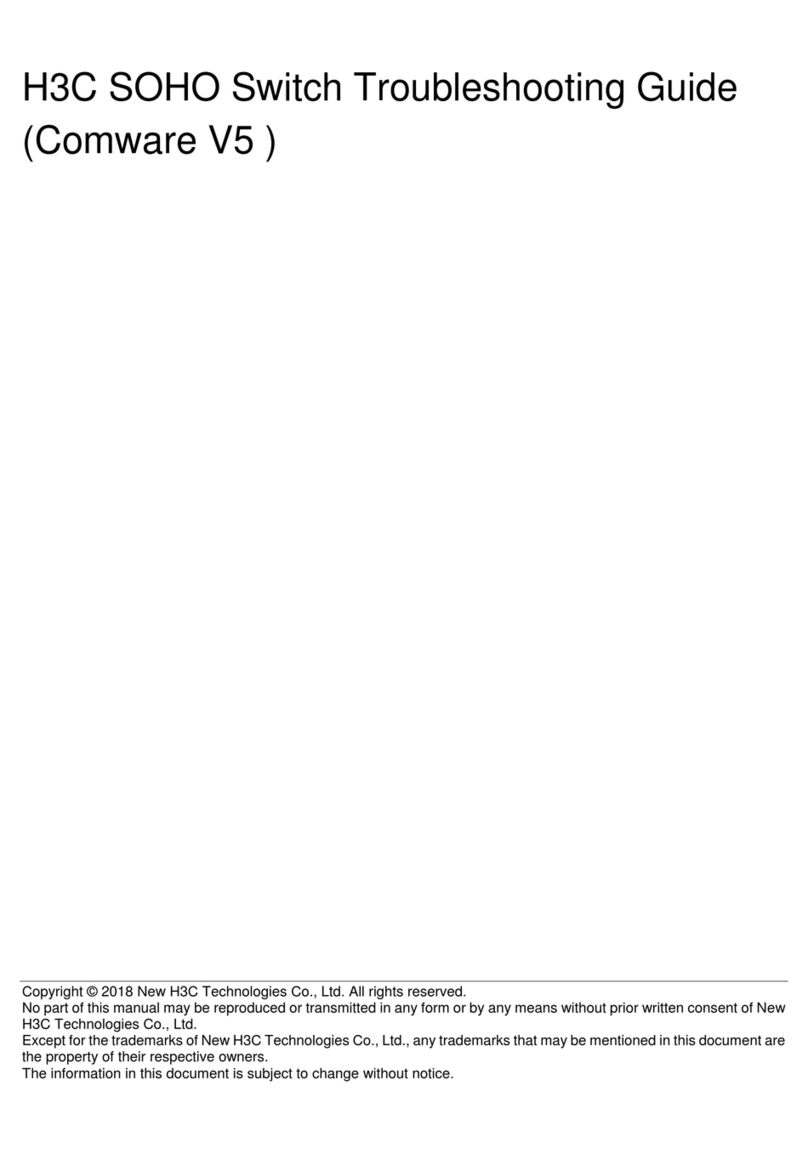
H3C
H3C SOHO Series User manual
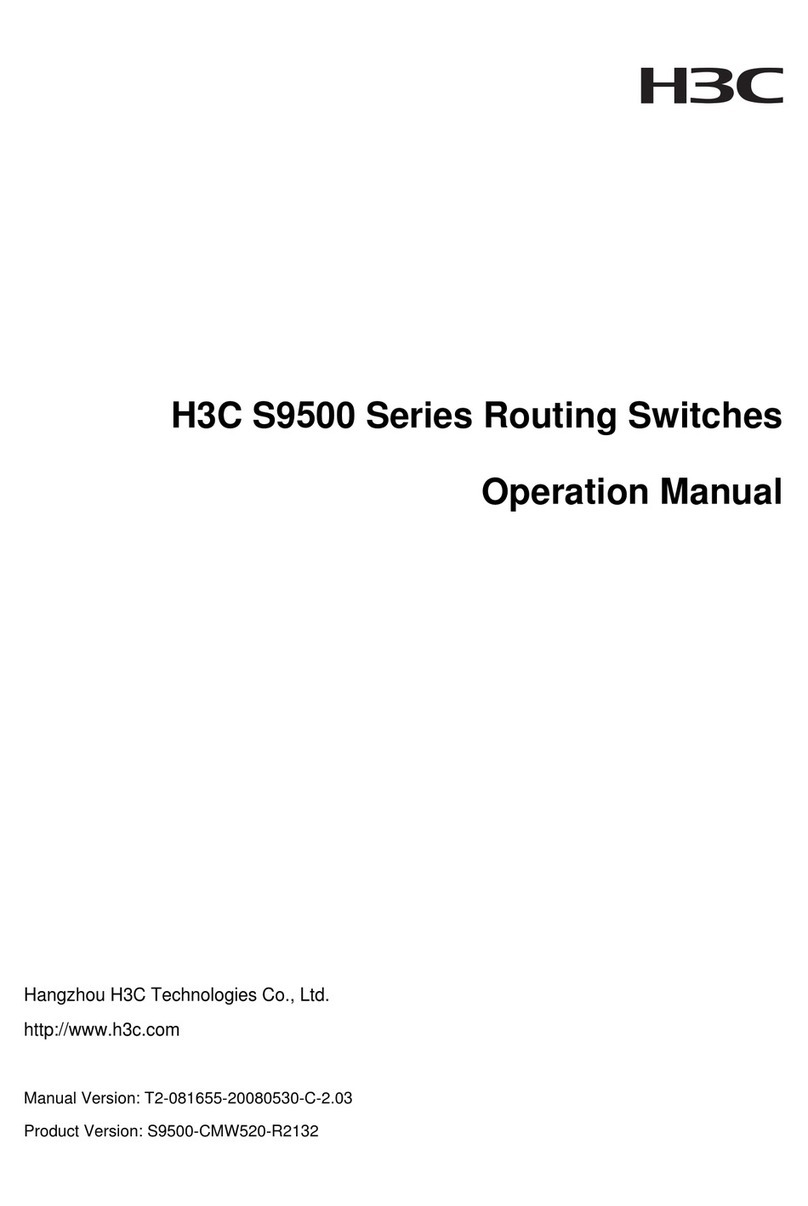
H3C
H3C S9500 Series User manual
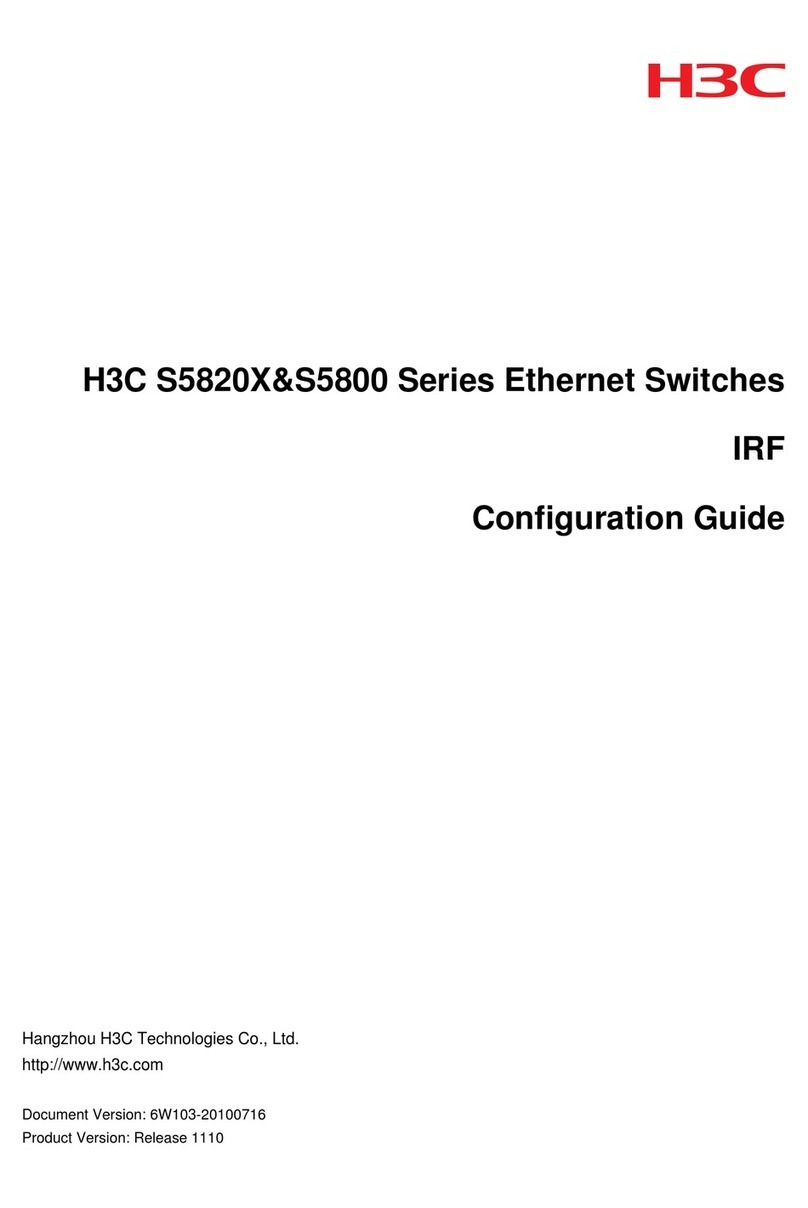
H3C
H3C S5820 series User manual
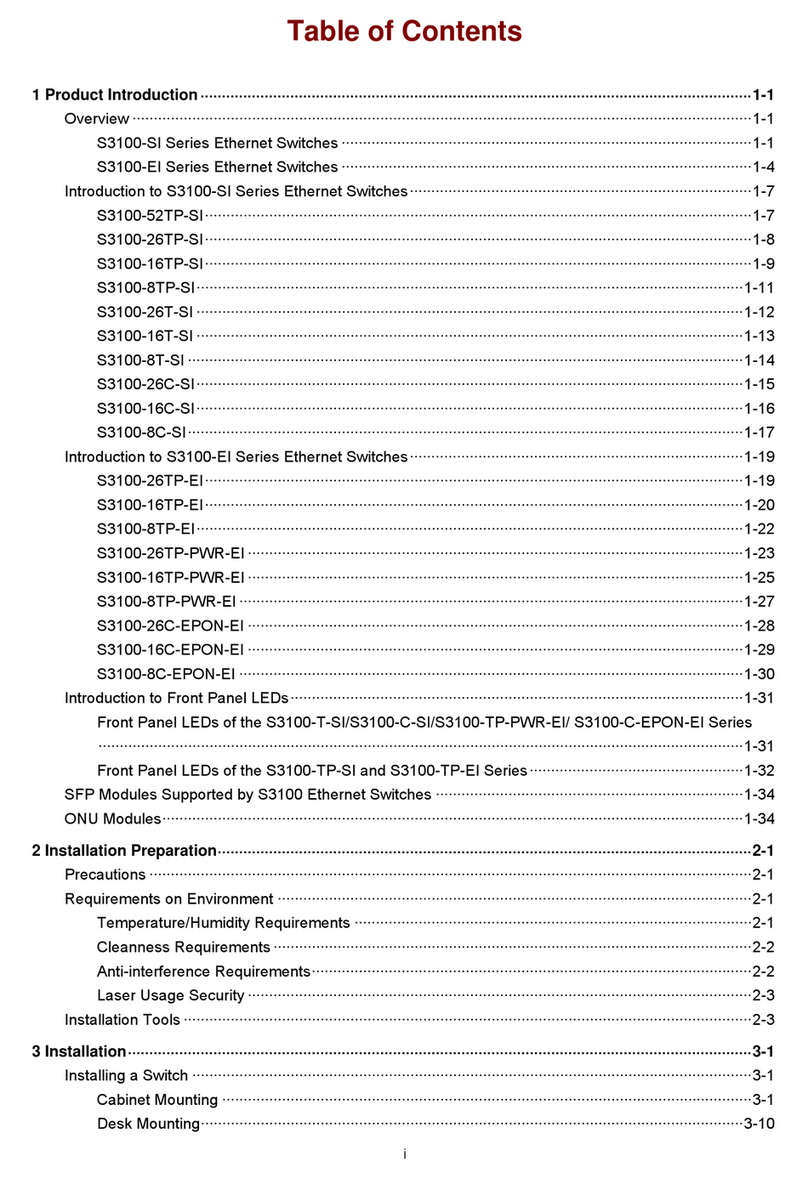
H3C
H3C S3100-8TP-SI User manual
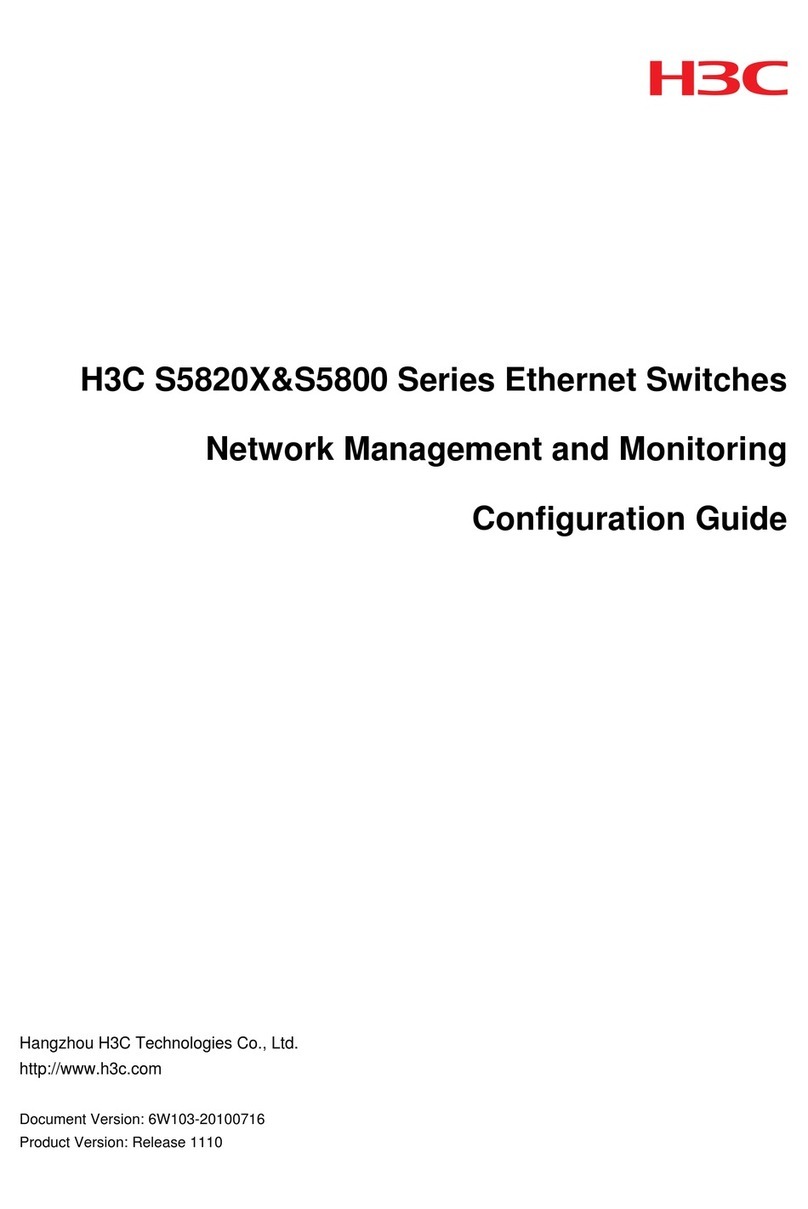
H3C
H3C s5820x series User manual
